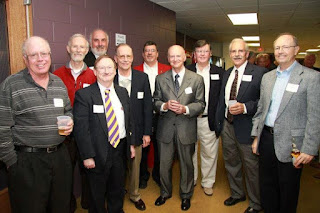 |
| My apartment on University Ave |
‘The
Old Country’ could be a metaphor for tracing one’s roots back to the origins of
one’s birth; spiritually, mentally, emotionally, and philosophically as well.
Personally for me, it remains those places, people and events that made me who
I am today. And even though the physical remnants may be dust or captured only
in my memory vault, the emotions tied to those mile markers can never be erased.
 |
| Northrup King Building |
Norde East is the new ‘West Bank of the Sixties’ with its winners and losers, seekers and soul-lost vagabonds. It is at once a cliché, hallowed artistic ground for some and a drug-etched campground for wilderness bobos (bourgeois bohemians.) It’s a carry-over from the late ‘70’s new establishment which represented a fusion between the bourgeois world of capitalist enterprise and the hippie values of the bohemian counterculture.
The
old neighborhood is now a factory for all forms of creativity, from aimless fun
to hobby-making to inspirational statements. It has long been a respite from’
the man in the grey-flannel suit’ and the middle-aged cherubs with their
everyday ‘pleasant valley Sunday.’
 |
| Triangle Bar |
 |
| SIP Coffee Bar |
For
me it is like going back to the old country. Now instead of the Triangle Bar,
I’ve got the SIP coffeebar. Instead of a schooner of beer, I’ve got my notepad.
Instead of slumming sorority chicks giving me the eye, I’m rubbing shoulders
with millennials, college part-timers and the assorted middle aged dinosaur
thrown in. It’s the third stage of a bohemian migration that has occurred
during my lifetime. The same ageless cauldron of creativity settling in on the
fringes of civilized white cable society.
The
term ‘Bohemian’ was first given to poor artists and poets on the Left Bank in
Paris in the 1830’s. Twenty years later the New York Times used it as a
dismissive term to describe the bohemian counterculture that had settled into
the Greenwich Village area of an expanding New York City. A hundred years
later, little has changed.
Those
societal edge dwellers of the forties and fifties infiltrated Dinky town for
many years before meandering across the river to the historic Cedar Riverside
neighborhood. They flourished on the West Bank around the University of
Minnesota until economic and cultural forces pushed them over to Lower Town in
Saint Paul and North East Minneapolis. Then gentrification and rising rents
moved the earthier to Norde East for good.
It’s
my home while Sharon is in art class. Realistically there is a lot less
dreaming and more doing this time around. I’ve already revisited that idea with
two other blogs: ‘Resin to Believe’
and ‘Caskets and Carriages under the
Torch.’ Yet to juxtaposition my life back then with the present reveals an
interesting evolution of thoughts and dreams revisited, revised and in constant
motion.
It
was Susan and I back then. It is Sharon and I now. Two very different women
running parallel tracks in search of something elusive, vapid and yet fodder
for their creative souls. I shared that running track back then and still do
today. Reflecting back on that era I realize now that so many of my changes
began during that creative bush-whacking period. They continue today. Different
woman, same vision quest.
Those
parallel tracks still run close together. I was seeking back then. I am still
searching today. Yet I realize I’ll probably never find that elusive answer
until there is only time for reflection left. Susan was searching back then for
her self-identity. Sharon is finding her new creative self and peeling back
layers of discovery each time she puts paint to paper.
But
once again a hint of change is in the air. New construction crowds alongside
rehabbing and remodeling projects to change the dusty, dirty old face of Norde
East. Brew pubs present a cleaner face to the corner tavern and condos tower
hover over rundown tired relics of the past.
This
will probably be my last bastion of edge living where I can go slumming among
the creatives. By the time there is another migration to newer creative fields,
I’ll probably be on my last bike ride. I skipped past Dinky town, lived the
West Bank dream if only in my mind and now slip under the cover of journalistic
observation to peruse the new haunts of Norde East.
These
creative haunts still speak to me. Not for the mind-expanders or the loose
living or the aimless wandering in vapid mindless ways. Instead they speak to
me of possibilities, reflections, dreams and hopes for the future.’ It’s a
creative cauldron of alphabet soup where a writer can dip his soul-exposed pen
and etch out on a plastic screen all his thoughts and dreams and hopes and his
own foolish ‘what if’s.’
It’s
like going back to the old country if only in my mind. Because that’s where it
all began and continues on to this day.








































